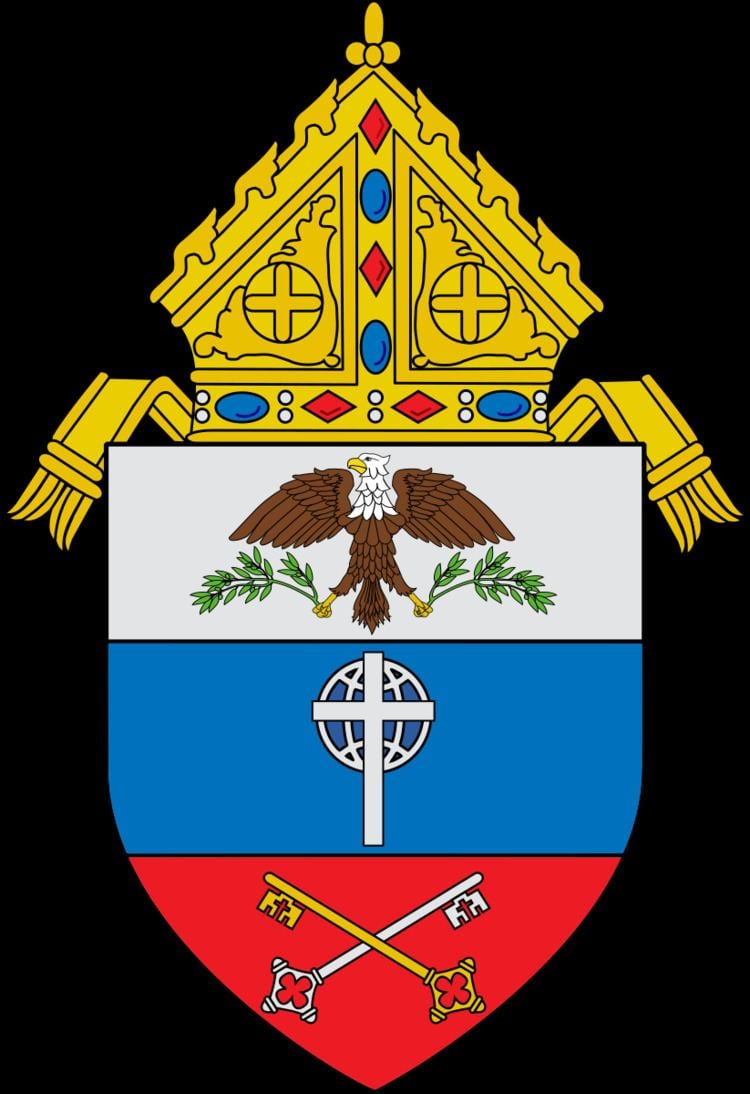Denomination Roman Catholic Archbishop Timothy P. Broglio Phone +1 202-719-3600 Founded 1957 | Rite Latin Rite Country United States of America | |
 | ||
Established September 8, 1957 (59 years ago) Address 1025 Michigan Ave NE, Washington, DC 20017, USA Similar Archdioc of Washingt, Basilica of the National, United States Conferen, Cathedral of St Matthew t, Catholic News Services Profiles | ||
Military chaplain shortage addressed
The Roman Catholic Archdiocese for the Military Services, USA, provides the Roman Catholic Church's pastoral and spiritual services to those serving in the armed forces of the United States and their dependents and to all military and naval bases, to the facilities of the Veterans Administration, and to other federal services overseas. It was originally established as a military vicariate, with the Archbishop of New York also serving as the military vicar, in 1917 and subsequently reorganized as an archdiocese, with its own archbishop and its see relocated to the District of Columbia, by Pope John Paul II in 1985. The current diocesan bishop is Archbishop Timothy P. Broglio. He is assisted by several auxiliary bishops. Together, they oversee Catholic priests serving as chaplains throughout the world. Each chaplain remains incardinated into the diocese or religious institute for which he was ordained.
Contents
- Military chaplain shortage addressed
- History
- Prelature
- Military ordinaries and archbishops
- Auxiliary bishops
- Chancery
- Noncombatant status
- Prayers
- Notable chaplains by conflict
- MexicanAmerican War
- Civil War
- SpanishAmerican War
- World War I
- World War II
- Korean War
- Cold War pre Vietnam
- Vietnam War
- Cold War post Vietnam
- Iraq WarWar on Terror
- Fiction and literature portraying Catholic military chaplains
- References
The Archdiocese for the Military Services, USA is a personal jurisdiction, meaning that it has no defined territory and that its jurisdiction extends to those whom it serves throughout the world. This Archdiocese has jurisdiction wherever American men and women in uniform serve. The jurisdiction of the Archdiocese extends to all United States government property in the United States and abroad, including U.S. military installations, embassies, consulates and other diplomatic missions.
History
Prior to the creation of the Military Ordinariate and then the Archdiocese for the Military Services, the armed forces of the United States was served by an informal corps of volunteer priests. Beginning in 1917, the spiritual care of those in military service fell to the Military Vicariate, the equivalent of a personal vicariate apostolic, that is, a particular church the membership of which is defined by some personal quality (as in this case being a member or a dependent of a member of the armed services) that is headed by a legate of the pope. Originally, the ordinariate was headed by then-Bishop Patrick J. Hayes, an auxiliary bishop of the Archdiocese of New York who served double duty as papal military vicar for the United States beginning on November 24, 1917.
Hayes was chosen because New York was the primary port of embarkation for U.S. troops leaving for Europe and therefore a convenient contact point for Catholic chaplains serving with them. When Cardinal John Farley, Archbishop of New York, died, Hayes was appointed as his successor and simply kept the additional title and duty of military vicar. In November 1939, the Holy See formally established the Military Vicariate of the United States of America. The post remained an additional duty of the archbishop of New York from Hayes' time until Cardinal Terence Cooke began plans to separate it as its own jurisdiction in the early 1980s, plans he was unable to carry out before his death in 1983. His successor, Cardinal John Joseph O'Connor, a retired Navy chaplain with the rank of Rear Admiral, having served as chief of Navy chaplains (the military's title for its own senior chaplain officer) who subsequently served as an auxiliary bishop for the Military Vicariate, succeeded Cardinal Cooke as Archbishop of New York and Apostolic Administrator of the Military Vicariate. He oversaw the completion of the transition. On July 21, 1986, Pope John Paul II reconstituted the military vicariate as the present Archdiocese for the Military Services, USA, naming Archbishop Joseph T. Ryan its first archbishop.
As of April 2013, about 25% of the U.S. armed forces are Catholic.
Prelature
The lists of bishops, archbishops and auxiliary bishops and their tenure of service:
Military ordinaries and archbishops
* O'Hara was appointed "military delegate" at the same time that Spellman was appointed "military vicar," essentially making Bishop O'Hara something a bit more than the vicar general under then-Archbishop Spellman's jurisdiction.
Auxiliary bishops
Chancery
The diocesan chancery is located in Washington, D.C.
Noncombatant status
See: Military chaplain#Non-combatant statusThe Geneva Conventions state (Protocol I, 8 June 1977, Art 43.2) that chaplains are noncombatants: they do not have the right to participate directly in hostilities. Captured chaplains are not considered Prisoners of War (Third Convention, 12 August 1949, Chapter IV Art 33) and must be returned to their home nation unless retained to minister to prisoners of war.
